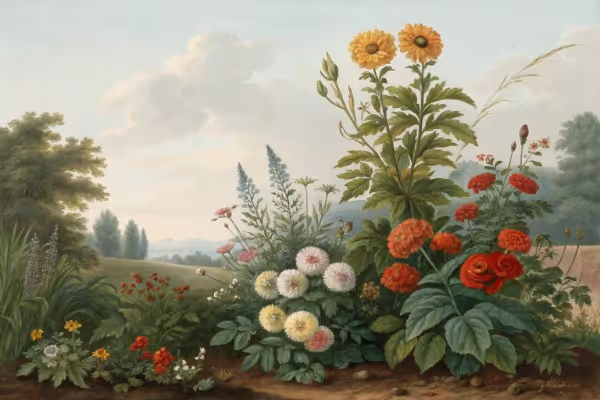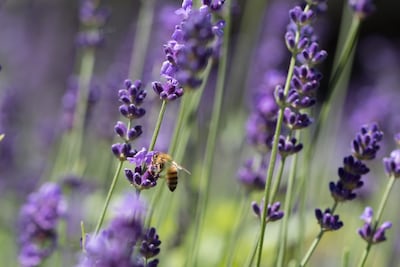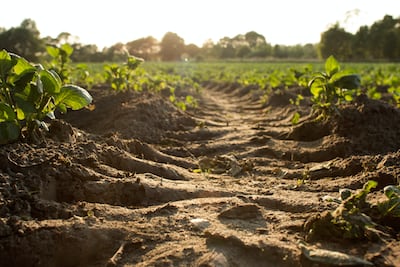What to Plant in March for a Healthy, Beautiful Spring Garden
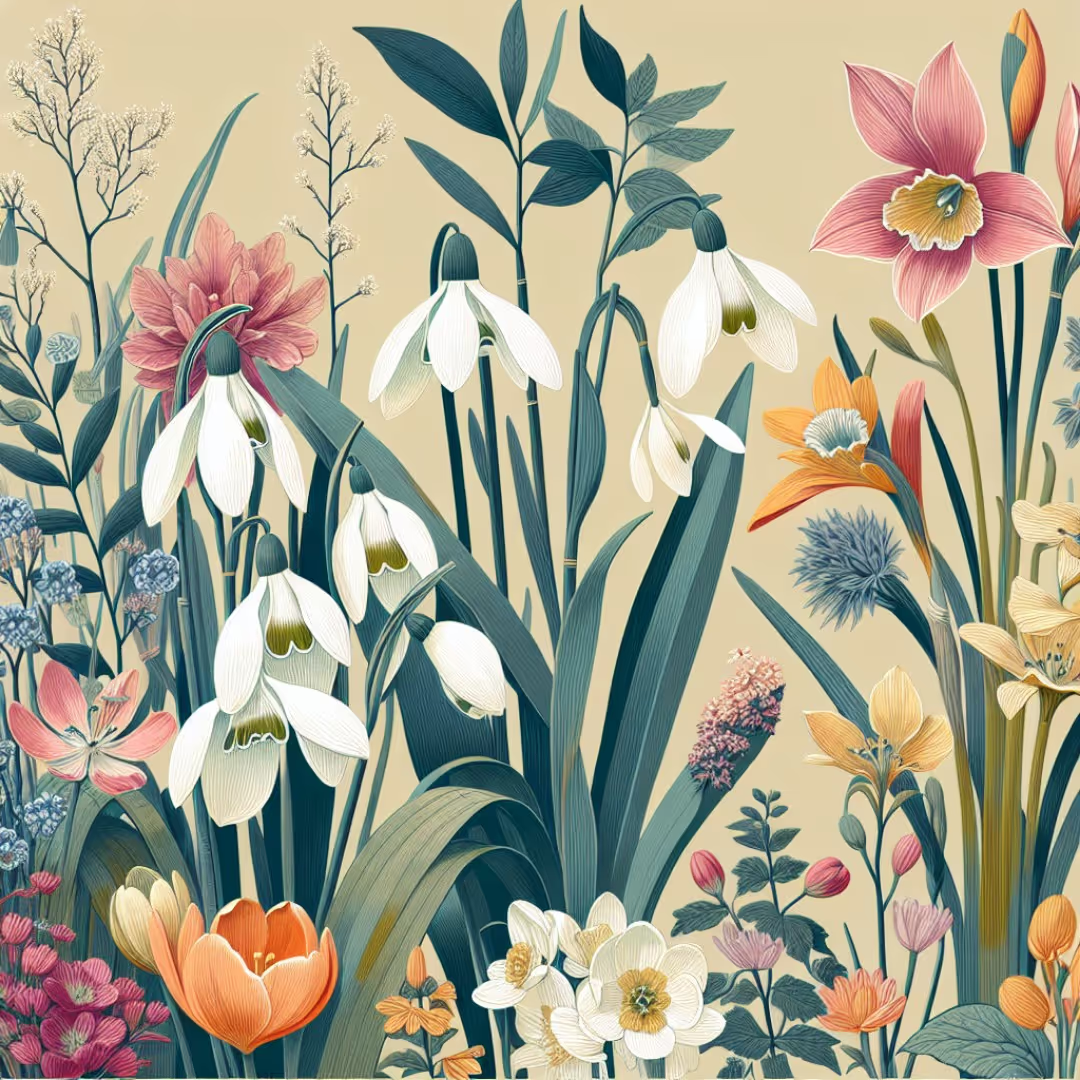
What to plant in March
Wondering what to plant in March? Sow hardy veggies like kale and peas now, start fragrant herbs indoors, and prep flowerbeds with dahlias or cosmos seeds. March planting sets the stage for vibrant blooms and flavorful harvests—keep reading below for simple tips on kicking off your spring garden.
Cheatsheet: March Planting for Vibrant Spring Beds
🌱 Cool-Season Vegetables
- Direct sow: spinach, lettuce, arugula, peas, carrots, radishes
- Transplant: broccoli, cabbage, kale, onions
- Nutrition: Greens supply Vitamins A, C, K; support immunity
- Soil temp: 40-60°F / 4-16°C
🌸 Flowers for Early Blooms
- Sow pansy, viola, calendula, larkspur outdoors
- Plant ranunculus, anemone bulbs
- Transplant primrose, snapdragon, sweet alyssum
- Attract pollinators: Boost food crops by 30%
🌿 Herbs for Fresh Flavor
- Sow cilantro, dill, parsley, chives
- Start basil, oregano, thyme indoors
- Pick weekly: Higher volatile oils, maximum taste
🍓 Fruit Starts
- Set out strawberry crowns, rhubarb roots, asparagus crowns
- Space strawberries 12-18 in / 30-45 cm apart
- Self-sufficiency: Home-grown fruit cuts grocery bills
🧰 Tools and Products You’ll Need
- Hand trowel, garden fork
- Watering can, hose with fine rose
- Seed starting trays, propagation dome
- Organic compost, balanced fertilizer
- Frost cloth (for late chills)
- Sharp pruners for deadheading
📋 Steps for March Planting Success
- Test soil; amend with compost if below 5% organic matter
- Check ground temp: Wait until above 40°F/4°C for most seeds
- Direct sow cool-season seeds ¼–½ in (0.6–1.2 cm) deep
- Transplant hardy starts on mild, overcast days
- Apply frost cloth at night if temps dip below 32°F/0°C
- Water gently: Keep soil evenly moist, not soggy
- Thin seedlings at 2 in/5 cm tall for airflow & root strength
- Feed with balanced fertilizer after first true leaves
March rewards the grower who watches soil temperature and last-frost windows, not the calendar. I keep a soil thermometer in my pocket and start once beds read 40 to 45 F or 4 to 7 C and the soil no longer sticks to my boots.
Peas sprout in about 7 days at 60 F or 16 C but can take 3 to 4 weeks at 40 F or 4 C. Source: university extension germination tables.
Local data matters, so pair the USDA Plant Hardiness Zone map with your county extension frost date and a simple soil probe. I like phenology cues too, such as sowing peas when forsythia blooms and pruning roses when daffodils open.
"Right plant, right place." Beth Chatto
I open March with crops that relish chill and short days, then stagger sowings every 10 to 14 days. This spreads harvests and dodges warm spikes that turn leaves bitter.
- Peas: direct sow 1 inch or 2.5 cm deep once soil hits 40 F or 4 C, and dust seed with pea inoculant in new beds for stronger nodulation.
- Spinach: broadcast thickly in a 6 inch or 15 cm band, thin for baby leaves, and keep fabric cover on to dodge leaf miners.
- Lettuce: choose cold winners like 'Salad Bowl', 'Winter Density', or 'Red Russian' mixes, and plant shallow at 0.25 inch or 6 mm.
- Arugula and mustards: fast flavor in 21 to 35 days, and row cover keeps flea beetles away without sprays.
- Radish: 'French Breakfast' or 'Easter Egg' in loose soil at 0.5 inch or 1.2 cm deep, and never let them dry out or they hollow.
- Carrots: pre-water the row, sow 'Napoli' or 'Yaya', then lay a board or burlap to hold moisture until germination.
- Beets: soak clusters overnight, thin early, and use thinnings in salads.
- Onions and shallots: set out pencil-thick starts, or plant sets just below the surface with the tips peeking.
- Potatoes: start chitting in bright, cool light, then plant as soon as soil reaches 45 F or 7 C, 4 inches or 10 cm deep.
- Brassicas: transplant sturdy broccoli, cabbage, and kale starts under row cover for windbreak and early heat.
Cold frames and low tunnels stretch this list in zones 3 to 6. Even a simple hoop with 0.5 oz per sq yd or 17 g per m² fabric adds a margin of safety.
Hardy annuals give you bloom while summer divas still sulk under the grow lights. I direct sow where I want them to flower, then thin ruthlessly.
- Calendula: resilient to about 26 F or minus 3 C, and 'Pacific Beauty' keeps throwing petals for months.
- Cornflower and larkspur: sow shallow, then press seed to firm contact and keep evenly moist.
- Poppies: sprinkle on the surface, mix seed with sand for even distribution, and resist transplanting.
- Sweet peas: trench compost in fall if you can, then direct sow now with a mesh panel for climbing.
- Violas and pansies: set sturdy starts, and pinch for branching.
- Snapdragons: in mild zones, fall-sown plants surge now; in colder zones, set out hardened transplants late March under cover.
- Nigella and eschscholzia: self-sowers that love a lean bed and reward neglect.
Fresh flavor lands quickest from herbs that dislike heat. I sow them thick and cut young.
- Cilantro: sow every two weeks, and choose slow-bolt types like 'Calypso'.
- Dill: direct sow where it stands, since taproots sulk if moved.
- Chives and garlic chives: divide old clumps now and replant in fertile, well-drained soil.
- Parsley: soak seed overnight, then give it patience and consistent moisture.
- Thyme, oregano, and sage: plant sturdy starts in raised spots to avoid winter-wet losses.
- Mint: plant in containers to avoid takeover, then sink the pots to the rim in a bed.
March is prime time for bare-root orders, and the price-to-vigor ratio still amazes me. Soak roots 1 to 2 hours, trim torn bits, then plant with the crown at grade.
- Asparagus crowns: trench 6 to 8 inches or 15 to 20 cm, spread like octopus arms, and backfill gradually.
- Rhubarb: set the crown just at soil level in a rich, sunny spot, then ignore it and it will reward you.
- Strawberries: plant so the crown breathes, aim for day-neutrals like 'Albion' for steady fruit.
- Raspberries and blackberries: install trellis now, and space for airflow to avoid cane diseases.
- Blueberries: acidify to pH 4.5 to 5.5, mix in peat-free acidic compost, and irrigate evenly.
- Apples, pears, and stone fruit: graft union 2 to 4 inches or 5 to 10 cm above soil, and stake whips the first year.
- Roses: plant bare-root with the union at or just below grade in cold regions and at grade in warm areas.
- Peonies: set eyes 1 to 2 inches or 2.5 to 5 cm below soil, any deeper and you lose flowers.
RHS and many extensions endorse planting bare-root fruit and ornamentals in late winter through early spring while plants are dormant.
Spring bulbs planted last fall carry the headliners, but March still offers a second wave. I pot many of these under cover, then shift them out after frost.
- Ranunculus and anemone: pre-soak corms 3 to 4 hours, then plant claws down 2 inches or 5 cm deep.
- Gladiolus: in zones 7 to 10, start now; in colder zones, wait for mid to late spring soil warmth.
- Dahlia: pot up tubers in March indoors for earlier bloom, then plant out after frost with a sturdy stake.
- Spring garlic: if fall slipped by, plant in March and expect smaller heads but usable scapes.
March belongs to bowls of salads and patio peas that climb twine. Use a peat-free potting mix, not garden soil, and feed lightly but consistently.
- Peas in a half barrel with a tidy trellis like 'Sugar Ann' or 'Sugar Snap'.
- Cut-and-come-again lettuce in a 12 inch or 30 cm bowl for nightly salads.
- Baby beets and mini carrots in deep, loose containers for straight roots.
- Strawberries in wide low pots for easy picking and fewer slugs.
This is the month I queue warm-season stars so they hit size by last frost. Keep lights 2 to 4 inches or 5 to 10 cm above seedlings for squat, sturdy growth.
- Tomatoes: sow 6 to 8 weeks before last frost, and up-pot once to promote root mass.
- Peppers and eggplant: sprout best at 80 to 85 F or 27 to 29 C with a heat mat, then grow on cooler for stockiness.
- Basil: start late March for transplanting with tomatoes, since it hates cold feet.
- Zinnias and cosmos: sow late March if your last frost sits in May, and avoid excess nitrogen.
- Soil blocking or 128-cell trays both work, but bottom-water and add a fan for airflow.
For most warm crops, aim for 14 to 16 hours of light and gentle air movement to reduce damping-off. Source: university greenhouse guidelines.
- Zones 3 to 4: start onions, brassicas, and leeks indoors, and direct sow spinach and peas under fabric.
- Zones 5 to 6: direct sow peas, spinach, radish, carrots, beets, and hardy flowers, and plant potatoes by late March if soil allows.
- Zones 7 to 8: transplant brassicas, onions, and lettuce, direct sow hardy annuals, and start tomatoes and peppers indoors now.
- Zones 9 to 10: finish cool crops early, succession sow beans, cucumbers, and squash as soil hits 65 F or 18 C, and set sweet corn.
NOAA frost normals and the USDA zone map give a framework, but microclimates rule. South-facing brick, wind breaks, and cold hollows can swing your timing by two weeks.
I top-dress established beds with 0.5 to 1 inch or 1 to 2.5 cm of mature compost, then let worms do the hauling. If a cover crop stands waist high, I scythe and crimp, then plant transplants through the mulch.
Do a soil test every 2 to 3 years and chase a pH of 6.0 to 7.0 for most vegetables. Blueberries and azaleas want acid, so they live elsewhere.
Light row cover can add about 2 to 4 F or 1 to 2 C and tames wind that desiccates seedlings. I use hoops tall enough to avoid leaf abrasion.
- Fabrics: 0.5 oz per sq yd or 17 g per m² for early season, and heavier only for hard freezes.
- Cold frames: vent daily above 60 F or 16 C to prevent leggy growth.
- Cloches: cut the bottoms off clear jugs and pin them, then remove on warm days to avoid cooking seedlings.
- Water before a frost to buffer temperature swings, and deploy slug traps the same night.
- 'Sugar Ann' snap pea for pots and early snacks.
- 'Space' spinach for thick, bolt-resistant leaves.
- 'Winter Density' lettuce that holds texture in chilly nights.
- 'Napoli' carrot for spring sweetness and tidy roots.
- 'French Breakfast' radish that stays crisp if kept moist.
- 'Chioggia' beet for candy stripes and tender greens.
- 'Pacific Beauty' calendula for cuts and pollinators.
- 'Matucana' sweet pea for scent that stops you mid-row.
- First-early potato like 'Yukon Gold' for June meals.
- Day-neutral strawberry 'Albion' as bare-root bundles for fast establishment.
Peas on St. Patrick’s Day have never let me down in zones 5 to 6 if the bed drains well and I plant thick to outpace voles. A simple 19 g per m² fabric cuts flea beetle pressure on arugula to nearly nothing in my plots.
Germination speed tracks soil heat, so I use a dark tarp a week prior on carrot beds to buy a few degrees. I have logged better early spinach yields under low tunnels by roughly 20 percent over open beds, which mirrors extension trial results.
Rhizobium inoculant bumps pea and bean performance in fresh beds per several extension bulletins, and that matches what I see in yield and pod set. Blueberries only thrive for me after I hit pH targets and mulch with pine fines at 3 to 4 inches or 7 to 10 cm.
- Can I overseed lawns now: cool-season turf germinates at 50 to 65 F or 10 to 18 C, but long-term quality often improves with late summer seeding per turf research.
- Do I fertilize now: I feed heavy feeders at transplant with a mild starter, then side-dress when soil warms and plants actually grow.
- What potting mix: choose a peat-free, well-aerated blend with coarse fibers for oxygen and consistent wicking.
- How do I plan successions: set a 10 to 14 day sowing cadence for salads and roots, then stick it on the fridge.
USDA Plant Hardiness Zone Map for baseline climate bands. NOAA normals and frost date averages for timing windows.
Royal Horticultural Society gardening calendar and profiles for hardy annual performance. University extensions like Minnesota, Cornell, and UC ANR for germination temps, cultivar trials, and pest timing.

Want smarter plant choices? 🪴
Frequently Asked Questions About Early Spring Planting
Which vegetables thrive best when sown in early spring?
Vegetables such as peas, spinach, kale, radishes, carrots, and lettuce sprout vigorously in cooler March weather. These crops germinate effectively in soil temperatures ranging from 40°F to 75°F (4°C to 24°C), making them ideal for early sowing.
Are there herbs suitable for planting during this period?
Parsley, chives, dill, and cilantro favor cooler spring conditions and flourish when planted in early March. Sow these herbs directly outdoors, offering full sun or partial shade to encourage vibrant new growth.
What types of flowers can I plant outdoors in early spring?
Early-blooming annuals such as pansies, violas, sweet peas, and calendulas thrive when planted outdoors in early spring. Hardy perennials, including primroses, hellebores, and pulmonaria, also establish themselves well during cooler months.
Should summer-flowering bulbs be planted at this time?
Absolutely. Early spring is optimal for embedding summer bulbs such as lilies, gladioli, dahlias, and freesias. Position bulbs at a depth approximately three times their height to ensure sturdy roots and vibrant summertime flowers.
Can I start planting fruit bushes or trees now?
Yes, early spring provides ideal conditions to establish bare-root fruit bushes and trees, including apples, pears, cherries, raspberries, and blueberries. Planting now enables healthy root systems to form before active spring growth begins.
Is seed-starting indoors necessary for certain plants?
Starting seeds indoors is beneficial, particularly for warm-season plants sensitive to frost, such as tomatoes, peppers, and eggplants. Begin these seeds indoors approximately 6 to 8 weeks before your region’s last expected frost date, then transplant outdoors after temperatures reliably remain above 50°F (10°C).
March is the month to shake off winter and go all in. What to plant in March comes down to timing and guts—cool-loving greens, sweet peas, and sturdy perennials thrive in the chill, while flower seeds like poppies and larkspur can handle a late frost. Don’t forget eggshells for soil health and cinnamon to keep seedlings strong. The work now sets the stage for everything to come.
Get your hands dirty, trust the old rules, and don’t be afraid to experiment. Food gardens started now reward you double. If you’re new, gardening classes help you avoid rookie mistakes. The secret? Plant what you’ll eat, what you’ll admire, and what the bees will love. March gardens are built on hustle and hope. That’s how spring magic happens.
Pro Tips for Maximizing Your March Planting Success
Soil Prep Essentials
- Test soil pH: Most veggies thrive between 6.0–7.0; blueberries prefer a lower 4.5–5.5.
- Integrate compost early: Mix 2–4 inches (5–10 cm) of aged compost into beds two weeks before planting.
- Warm beds faster: Cover soil with clear plastic sheeting one week beforehand for an 8–12°F (4–7°C) temp boost.
Smart Companion Planting Combos
- Carrots + Radishes: Radishes germinate quickly, marking carrot rows clearly for easier thinning.
- Lettuce + Onions: Onion odor repels aphids, protecting lettuce leaves naturally.
- Spinach + Strawberries: Spinach provides ground cover, deterring weeds around strawberry plants.
Seed Starting Tricks
- Presoak large seeds: Beans, peas, and squash soaked overnight germinate 50% faster.
- Increase airflow: Run a fan gently over seedlings daily to stimulate stronger stems and roots.
- Natural fertilizer boost: Water seedlings with diluted seaweed extract weekly to enhance nutrient uptake.
Early Pest Prevention Strategies
- Copper barriers: Prevent slug invasion with copper tape around raised beds or containers.
- Cloches and row covers: Shield young plants from pests and frost, raising temperatures by 5–8°F (2.5–4.5°C).
- Beneficial insects habitat: Attract ladybugs and lacewings by planting dill, fennel, or yarrow nearby.
Boost Nutritional Yield Effectively
- Space smartly: Proper spacing prevents nutrient competition, increasing harvest size by up to 30%.
- Harvest frequently: Regular picking encourages continual yield—leafy greens regenerate faster with weekly harvests.
Find out which plants will thrive in your garden!
Answer a few fun questions and get custom plant recommendations perfect for your space. Let’s grow something amazing together!

start your season
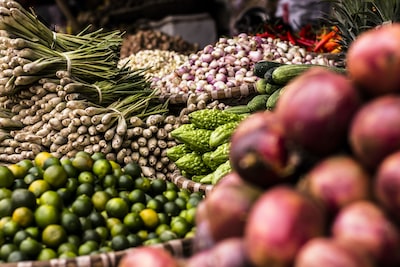
%2520(3).avif)
